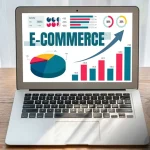Geofencing Mobile Applications: Benefits, Impact And Future Prospects

Personalizing user interactions with location-based targeted messaging services is picking up rapid pace by now. Among all marketing tech innovations, the location-aware smartphone apps that help travel brands reach and engage with their customers have generated a fresh wave. Already, location-aware apps are expected to hit the revenue of €30.6 billion by 2019.
Beacons, NFC and geofencing are one-of-a-kind technologies that allow companies to send relevant and contextual messages for effective mobile marketing and customer acquisition. However, due to unique industry- specific appeal and ability to deliver micro-level interactions, Geofencing seems to dominate beacons and other location-sensing technologies. This blog explores more of geofencing impact and benefits.
Challenges in the business market
Nowadays, it is becoming more and more difficult for marketers to create a competitive advantage when it comes to digital marketing. Businesses need to adapt and innovate constantly in order to meet the needs and behavior of the consumers. Geofencing can help to create a stronger strategy to reach the right target group. As the IoT allows them to collect more precise and accurate information about consumers, it is easier to anticipate on this.
There are majorly two types of location-aware technologies are available: 1. Beacons and 2. Geofencing.
Beacons
Beacons fall in the category of the Proximity sensor technology that is deployed for targeting users in specific locations. Small and powered by battery, beacons can transmit a Bluetooth signal which can be received by iOS and Android devices in the nearest proximity if they have a respective brand app. The ultimate result is a push notification.
What makes beacons promising is their indoor accuracy which seems perfect for micro locations. However, they are not so discreet and the implementation and maintenance cost is significant. For the entire setting to work, the devices must be in Bluetooth-enabled mode.
The biggest application for beacons technology is in travel industry, especially at airports. Already 84% of those global airport authorities are planning to install sensors in the next 3 years for commercial requirements, deploying beacons at entrances, security checks, gates and check-ins to send push notifications to arriving mobile users via the airport app. Due to data ownership challenges and other limitations, the solution of this kind could sound a little too expensive.
Geofencing
Geofence technology involves a virtual perimeter set by a radius covering a real-world location such as hospitals, restaurant chain or hotels. The purpose of geofencing is to conduct organic interactions with users when they enter the geofenced domain. The interactions quintessentially include contents like push notifications that closely fits into users’ world of requirements (dinner or breakfasts, coupons, Wi-Fi, hairstyle solutions or parking).
Albeit not being so novel, Geofencing has hugely sparked off immense interest among modern digital marketers. The reason for this location-aware technology being greatly popular is that it works without installation of fairly expensive beacon hardware and its understanding of the user’s location materializes at a macro-level.
Benefits: What makes Geofencing different from Beacons?
The feature that sets Geofencing apart from Beacons is that it does not expect users to keep their device active or the app open in order to receive notification from the companies and retailers using it. the unique aspect about Geofencing is that the Operating System of the device (iOS or Android) automatically triggers the app in the background as a user enters the radius determined by geofence.
Here, all the tracking efforts are taken over by the OS itself and the geofence targets an individual user via app based on their location instead of a big mass of users. The known information of user’s location and other data enlightens companies on user context, which helps them craft a message tailored personally for users.
For instance, imagine a user entering an airport terminal. the technology then interacts with user’s smartphone geolocation to learn whether they have arrived or left geofencing-controlled perimeter area. Gaining the knowledge of the user’s precise location, the app sends relevant connecting message to the device.
Practical use cases of Geofence Technology
From the above benefits, it is clear that Geofence offers tremendous opportunities to acquire and build strong relationship with customers using their mobile apps by means of sending smart notifications specific to user’s context. Here are a couple of practical use cases of the technology implementation:
EasyJet
Another application of geofence technology in traveling industry would be easyJet who became the first ever European airline to implement the technology in their app for Gatwick Airport terminal.
The implementation at the Airport has geofencing using aggregated information to deliver push notification in the app, guiding EasyJet travelers through various stages of their journey. It helps with gate entrance, check in and baggage claims when they arrive at the terminal.
Collinson Group
Collinson Group’s LoungeKey, a corporate travel membership program, allows members to create their digital membership card to gain access to over 850 airport lounges worldwide. The membership can be used to generate vouchers for special offers at different commercial outlets (shopping, dining and more) throughout the airport terminal.
LoungeKey app users gets real incentive for using the app at the airport terminal between check-in and check-out. The geofence feature in LoungeKey app helps companies compete with other travel apps by placing the app in user’s mind directly as they arrive at the terminal with a push notification provided they have turned on location services.
Geofencing presents us with hidden opportunities
From this example, it is easy to imagine rich prospects of geofencing-enabled mobile applications and realize how there are numerous opportunities to personalize customer experience and market services in travel industries.
It should be noted, however, that only correct implementation results into contextual personalization that delights customers and brings value. When poorly implemented, the geofencing technology may generate irrelevant, untimely and untoward messages, spoiling the entire strategy and reputation of travel brands.
Bottom line
Geofencing is a trending location-based marketing tool that fosters high hopes and potential for B2C mobile marketers. If implemented precisely, geofencing mobile applications can help brand marketers build most contextual push messages to reach customers, deliver value-added experiences and drive conversion. However, you must first analyze whether geofencing would be the right remedy to your business challenges. It is also equally important to take into account the data security and privacy of people.
Tags
Categories
- API Integration (2)
- App Development (35)
- Artificial Intelligence - Spaculus Software (23)
- Blog Categories (8)
- Business Analytics (9)
- Cloud Computing (5)
- Digital Marketing (9)
- Ecommerce (3)
- IOT (7)
- Latest Updates (20)
- Live Streaming (2)
- Marketing Automation (1)
- RPA (2)
- Tech World (21)
- Uncategorized (1)
- Web Design (13)
- Web Development (22)







